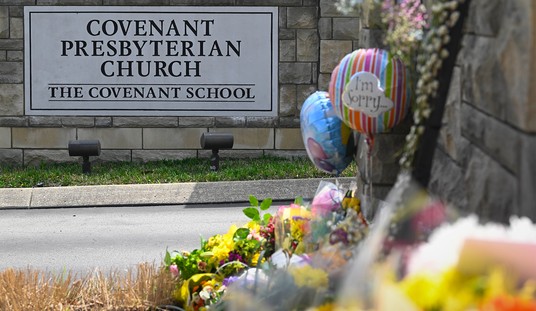“Mostly peaceful” anti-police protestors turned up in downtown Charlotte last night to denounce the (frankly obvious) decision make by prosecutors to not file criminal charges againstCharlotte-Mecklenburg Police Department officer Brantley Vinson for the death of armed felon Keith Lamont Scott.
The march was generally peaceful, especially compared with the sometimes violent protests in the days after Scott’s death in September. A heavy rain that soaked protesters around 7 p.m. Wednesday may have kept some people from participating.
However, scuffles between police and protesters broke out around 8:30 p.m. at the EpiCentre as the march continued through uptown to the Transit Center. The procession returned to CMPD headquarters a few minutes before 9.
CMPD said its officers had arrested a total of three people as of 9 p.m. for obstructing traffic.
Protesters tried to lower the American flag in front of CMPD headquarters, but officers stopped them. Some chanted that CMPD “murdered” Scott, while others there are “no good cops in a racist system.”
Around 10 p.m., protestors left CMPD headquarters and marched north on Trade Street.
Despite a State Bureau of Investigation report into Scott’s death, some protesters insisted Wednesday that a white police officer – not Vinson, who is black – shot Scott.
“Mayor (Jennifer) Roberts is out of touch, Chief (Kerr) Putney is out of touch,” said a protester who wants both to resign.
It’s rather difficult to talk any sense into a group that refuses to deal with basic realities such as the race of the officer who shot Scott, but we’re going to try all the same.
There are five major factors that led to Keith Lamont Scott being shot, all leading his shooting by Officer Vinson.
1. Keith Lamont Scott was using drugs in front of police while visibly armed.

Scott came to the attention of a CPMD warrant team that were at the apartment complex in order to apprehend a different person. They originally saw Scott in the possession of a small handgun as he walked to his vehicle, but made no move to confront him, as merely transporting a weapon is not a crime. A short time later, however, the officers saw Scott with what appeared to be a marijuana cigarette, also called a “blunt,” in his vehicle. Using illegal drugs, and especially using illegal drugs while armed, clearly justifies police attempting to take someone into custody.
2. Keith Lamont Scott had a stolen gun in his hand when confronted by police.

When officers approached Scott in his vehicle and identified themselves, Scott had a stolen handgun in his hands that he had purchased from another criminal that same month for $100. Officers warned Scott to drop that stolen Colt Mustang II .380 pistol multiple times.
3. Keith Lamont Scott exited his truck with the stolen gun in his right hand, held in firing grip.

A freeze frame from a body camera shows that when Scott exited the vehicle, (above), his ankle holster was visable on his right ankle, and the loaded Colt Mustang II .380 pistol was in his right hand, held down at his side.

4. Keith Lamont Scott refused eleven commands to drop the gun over the course of 45 seconds.
It takes less to for a suspect to raise and fire a handgun from the position Keith Lamont Scott was holding his handgun that it takes for officers to recognize that he is raising his weapon and take action in response. We can down the cognitive science rabbit hole if you so desire, but the clear and obvious truth is that action is always faster than reaction.
When a suspect is clearly armed, is clearly aware that he is being addressed by officers, and still refuses to put the weapon down, he goes from a potential threat (just a person with a gun) to a deadly force threat.
5. Keith Lamont Scott appeared to be squaring up to take a shot.

Keith Lamont Scott backed away from his vehicle, stolen gun in his hand, still refusing orders to drop his weapon, when he turned his head and appears to squaring up to engage officer Vinson, who is off the to left of the dash camera view (above). Scott had also back his way into a position where he had a clear shot on the officer in the red shirt, and could raise his gun before that officer could see the threat or react to a rising weapon.
Taken together in their totality and in the context of the entire incident, Officer Vinson’s perception that Keith Lamont Scott was a deadly force threat that needed to immediately be engaged at that time was a very reasonable decision.
Once Vinson decided to engage, he fired four fast shots to end the threat, and stopped firing the moment Scott showed signs of being hit. Vinson did not shoot Scott to the ground, nor did he fire upon him once he was down. All four shots fired (three of which hit Scott) were reasonable and justifiable.
Conclusion
It’s unfortunate that Mr. Scott, a convicted violent felon with a head injury, felt compelled to illegally arm himself and then illegally abuse drugs in public in view of police officers. It’s unfortunate that Scott refused at least 11 lawful commands to drop his weapon. It’s unfortunate that Scott forced Officer Vinson to fire upon him, but it was Scott, and Scott alone, who is ultimately responsible for his demise.








Join the conversation as a VIP Member